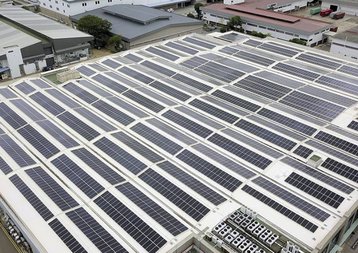Singtel on Tuesday announced that it has completed a new solar energy installation at its Bedok Data Centre, the company’s largest renewable energy installation to date.
Suntel
The 1.65 MWp solar energy installation on the data center's wide rooftop consists of 4,292 solar panels across an area of approximately 8,205 sq m, or the size of two soccer fields. The solar installation commenced operations last month and will generate 2,059 MWh of clean energy per year.
It is understood that the solar installation is a 13-year solar power purchase agreement (PPA) that Singtel subsidiary NCS inked with SunStep Global. Solar energy is generated for use on-site, which will meet 10 percent of the data center’s energy needs of around 2MW.
According to Singtel, it will contribute to the company’s current Science Based Target of 42 percent Scope 1 and 2 absolute carbon reductions across its Singapore and Australia operations by 2030.
“This project is an important step in our strategy to make the transition to a clean energy future. We also recognize that our green initiatives are increasingly important to customers, particularly enterprises that outsource their ICT operations to us and want to reduce their own carbon footprint too,” said Andrew Buay, VP of Group Sustainability at Singtel.
Singtel has a conservative net-zero goal emissions goal which it wants to reach by 2050. It is leveraging options such as exploring long-term renewable energy supply options, investing in more energy-efficient technologies, and working with partners in the supply chain to achieve its goal, says Buay.
On the same day, the Energy Market Authority (EMA) and JTC announced in a joint release that Singapore has achieved its 2020 solar deployment target of 350 megawatt-peak (MWp) in Q3. Set in 2010, the target was exceeded with the installation of a 6MWp rooftop solar installation at a CapitaLand property.
Singapore is now setting its sights on a new target of at least two gigawatt-peak (GWp) of solar deployment by 2030, announced late last year. This is equivalent to powering 350,000 households for a year, and will require the aggressive deployment of solar panels onto available spaces that includes the vertical surfaces of buildings, reservoirs, and even offshore sea space.




